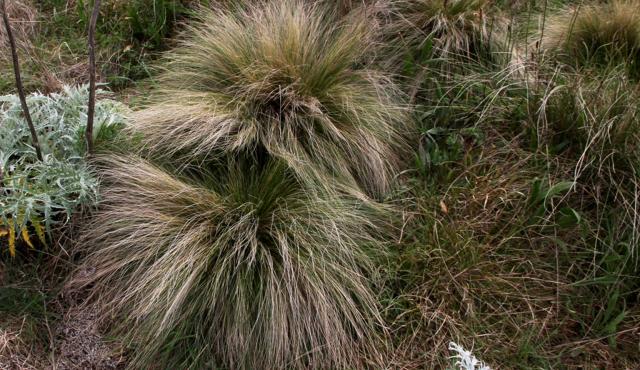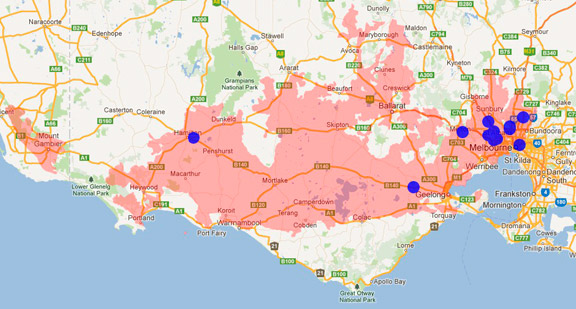A range of teacher professional learning programs will be developed to accompany the Biodiversity of the Western Volcanic Plains online outreach...

Serrated Tussock
Nassella trichotoma
A long-lived perennial that can invade poor soils and survive fire, drought and frost. It reduces the productivity of pasture and can create a fire hazard. Its fibre content is so high that stock are unable to digest it. Seeds are spread mainly by the wind but also by water and animals. The seed remains viable in the soil for more than 13 years.
| Details | Description |
| Type | Graminoid |
| Group | Grass |
| Identifying Characteristics | |
| Distinctive Features | Leaves are bristle-like with rough surfaces. The small serrations can be felt when fingers are moved downward along the blade. The leaf blade can be smoothly rolled between the fingers, where similar native species feel flat when rolled. Leaves are white at the base. Plants look purplish in flower but are bleached in autumn-winter. |
| Life Form Group | Graminoid |
| Life Form Codes | Medium to Small Tufted Graminoid (MTG) |
| EVC types | EVC 175: Grassy Woodland EVC 649: Stony Knoll Shrubland |
| Native Status | Introduced |
| Weed Status Invasiveness | High INVASIVE |
| Weed Status Impact | High IMPACT |
| Taxonomy | |
| Phylum | Charophyta |
| Class | Equisetopsida |
| Order | Poales |
| Family | Poaceae |
| Genus | Nassella |
| Species | trichotoma |

Distribution maps indicate current and historic locations where species have been sighted.
Source: Atlas of Living Australia
| Endangered Status | |
| DEPI Advisory List | Not listed |
| FFG Act | Not listed |
| EPBC Act | Not listed |
The conservation status of species is listed within Victoria and Australia.
The Department of Environment and Primary Industry (DEPI) Advisory List consists of non-statutory advisory lists of rare or threatened flora and fauna within Victoria.
The Flora and Fauna Guarantee Act 1988 (FFG Act) lists threatened species in Victoria. Under the Act, an Action Statement is produced for each listed species.
The Environment Protection and Biodiversity Conservation Act 1999 (EPBC Act) is the Australian Government’s key piece of environmental legislation, listing nationally threatened native species and ecological communities.



